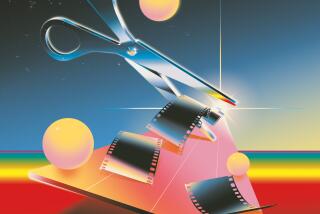Ask the Critic: Carina Chocano
- Share via
Question: Why do filmmakers insist on montages? Is it movie shorthand, or laziness?
Chocano: To understand the montage of today, you need to go back to its origins. In French, “montage” means editing, but in movie terminology, “montage” refers to a series of short shots edited into a sequence. Since Soviet filmmaker Lev Kuleshov, in his Kuleshov Experiment circa 1920, cut together the same reaction shot of a man’s face with images of food, a woman, etc. to show how a viewer would reach different conclusions about the action of a shot depending on its context, montage sequences have been a major element in the language of film. In 1925, Soviet director Sergei Eisenstein created the “intellectual montage,” a visual means of expressing complex ideas dialectically.
In the ‘20s, ‘30s and ‘40s, “montage” was an important element of modernism that spanned disciplines, intended to reconcile artistic, social and technological progress and major political upheavals.
The American montage, or Hollywood montage, popular in Hollywood musicals of the 1930s and 1940s, mainly used abbreviated shots from different times and places to condense time or summarize events.
The Hollywood montage was revived in the ‘80s to move plot points to a timely conclusion. It has congealed into hardened cliche. It seemed fresh again in 1976, when Rocky trained for his big fight to the strains of an inspirational rock anthem. But the montage has become a joke (sometimes intentional, sometimes Bruckheimer); shorthand for the Hollywood triumphalism we’re supposed to be inspired by; and a reflection of our instant-gratification culture.
As they sang in “Team America: World Police,” in that rousing number “Montage”: “When you need to get good at something really fast, you need a montage!”
Got a question? Go to calendarlive.com/askthecritic.
More to Read
Only good movies
Get the Indie Focus newsletter, Mark Olsen's weekly guide to the world of cinema.
You may occasionally receive promotional content from the Los Angeles Times.










